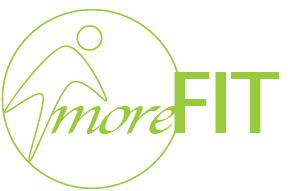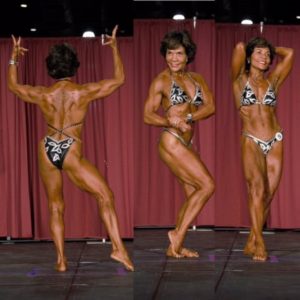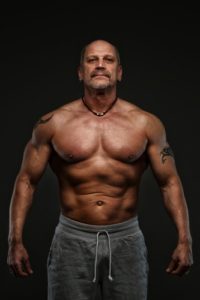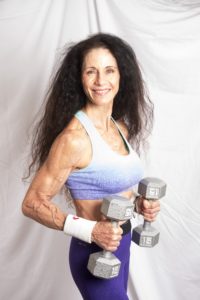More Lies About Getting Old(er)
Article Written By: Julia E Hubbel
Medium Lifestyle
“Well, it’s going to take a lot longer for you to heal,” the man intoned with the gravitas of great wisdom.
Uh-huh.
“The older you are, the longer it takes,” he added, pointing at my right shoulder, which had just undergone extensive surgery.
Uh, yep. If you say so.
As we walked through the garden store, he was bent over a bit. He’d broken his back a few years back. So had I, in four places. I was 64 when I did it. He was a lot younger. In his forties, in fact.
He was still crippled. Could barely lean over.
I can lean over and touch my face to my knees with my legs straight. I learned to do that while healing my own broken back last August.
This is not about being superior or judgmental or “look at me.” It is, however, about choices. This man didn’t exercise before his accident. I did. Including yoga six days a week, which means when I take a tumble (and I often do, spectacularly) I fall like a microwaved Gumby doll. I’ve been body slammed by horses and rocks and kayaks and anything with a nasty edge. I put myself in the way of hurt a lot because it’s fun and what I do. But I train for it. My garden store friend said “I should do yoga.” But he doesn’t. So he stays crippled.
Training also means that I heal really, really fast.
“Not What I Expected”
Which is why my ortho surgeon was quite surprised two days ago when, barely three weeks after that rotatory cuff surgery, I had very wide range of motion, strength and mobility. Far more than was to be expected that soon after surgery and most especially for an ancient like me at 65.
I train. Regularly, religiously, hard, and a great deal.
In a New York Times article from 2012 (https://www.nytimes.com/2012/10/25/booming/baby-boomer-injuries-heal-more-slowly.html), the author makes a critical point about how we Baby Boomers grew up exercising. Well, yah, kinda, a bunch of us did. However, how well we continued to make demands on ourselves rather than become mildly overconfident weekend warriors, which does indeed lead to strains and sprains, is another thing entirely.
When I lived in Spokane, I learned about a popular national event that brought out (and often crippled) aging athletes: Hoopfest (http://spokanehoopfest.net/).My good friend and sports chiropractor Dr. Mike Valente tells me about the carnage that occurs every year when older folks take to the asphalt without training or preparation. It ain’t pretty. This is particularly true for high impact sports. It’s not that you can’t do them- it’s that you can’t expect your body to be lithe and limber if you only do it once a month…or once a year.
One phrase I want to point out from the Times article: There is also the issue of the decreased bone and muscle mass that often comes with aging.
While to a degree this is true, there is a great deal of research that points in the other direction- as in, the more you exercise regularly (and eat intelligently), the more bone mass and muscle mass you have. Not only that, by exercising you are forcing your heart and lungs to push oxygen and nutrients efficiently through your body, which supports absolutely everything. Especially healing.
Another point: And then there is the matter of genetics, said Dr. Peter Jokl, a professor of orthopedics at Yale. No matter how good you are at staying in shape, your body is following a clock.
While there is some basis to this, the other truth is that genetics aren’t necessarily absolute destiny. What we decide about ourselves, such as Well, I’m just getting old.” or, “Well, that’s just my body.” are part of the ongoing communication we have with our physical selves.
We are not our bodies.
Our bodies are made up of trillions upon trillions of collaborating, cooperating and occasionally competing microorganisms which happen to function in a simply marvelous way to allow us to exist. Our bodies are an “it,” not an “I.” Understanding that critical difference is part of inviting, inciting and instigating all the powerful changes that slow- but do not stop- the aging process. This magnificently complex machine allows us the pleasure of walking around and being in this world. (For reference, please see I Contain Multitudes, by Ed Yong) It’s an eye-opener to the microscopic world. You aren’t you as you think. You are a walking community of teeming microorganisms and they respond to our intentions.
Ah, But They’re Just Lucky
People love to point to aging marathoners, athletes and bodybuilders as just lucky and it’s all genetics. Kindly tell that to this 71-year-old champion who never picked up a dumbbell until she was 59.
This woman gets up at 3:30 every day and is extremely disciplined about her workouts, eating and daily schedule. Whether you want to look like her makes no difference. The point is that she chose. Her aging body is exceptionally well-equipped to deal with disease, injury and aging. Genetics be damned — we have options. Plenty of them (Please see The Biology of Belief: Unleashing the Power of Consciousness, Matter and Miracles, by Dr. Bruce Lipton.)
One of my fifty-plus bodybuilder buddies at my local 24-Hour Fitness told me a story about about how he sustained a bad bicep tear. The PT specialists gave him baby weight to retrain. He laughed them off and put himself on a much tougher regimen. He was healed and back at the gym in no time. That’s not luck. That’s hard work. Attitude. Having a positive conversation with your body. As in, “You ARE going to give me five more reps. You ARE going to give me another half mile.” Truth? Sometimes we don’t get it. But the discipline to try makes all the difference. As we age, that conversation more often involves asking permission, rather than the drill sergeant approach.
But, as in all things, most especially with the body, you don’t get what you don’t ask for.
Healing is About Setting Ourselves Up for Success
Rapid healing of my extensive rotator cuff surgery (despite multiple impacts on same, thanks to the drugs) is not lucky. I trained hard right up to the day of surgery. I eat very carefully for this body- which has some idiosyncrasies that I have studied and come to respect. However what I have come to respect most is that no matter how serious my injury, I fully expect to heal quickly and be back at my sports in half the time. I telegraph that expectation to all the complex communities that make up the walking universe that forms this body. I expect to regain my strength, stamina and energy in no time.
Each time I injure, and I’ve had some doozies in the last few years, I find out more about what I CAN do rather than what I can’t. Every injury is an invitation to see what’s possible rather than to flatly state, “Well, I’m just getting old.” Chronologically, of course I am. We all are. How I get there is another matter indeed.
Sarcopenia
This man is in his fifties. My partner is 49 and a lifelong bodybuilder and athlete. They look a lot alike in terms of their body type and overall health. That isn’t just genetics. Genetics will only get you so far, and then, as my father found out the hard way, if you engage in decades of abuse or benign neglect, they will by god let you down.
To wit, sarcopenia, which happens to all of us, is the loss of body mass with age. According to WebMD, Physically inactive people can lose as much as 3% to 5% of their muscle mass each decade after age 30. However, say that to this guy. Or my BF. Or that Latina wonder woman. Or for that matter tell me that. We’re not lucky. In fact I inherited a wide body set of hips from my father’s side of the family. That was genetics.
We all age and die, and no, it doesn’t have to be messy and awful along the way. You can rely on conventional wisdom about how we heal, and use that as an excuse not to exercise (but I might sprain my ankle!! Yup, my hand is up). Or you can invite the Kingdom of You, all the various communities that make you up from head to toe, to take part in a question: How Far Can We Go Today?
That’s an invitation to play. What I’ve found out is that while they might be trillions of microorganisms, they understand that message. The better I live, the longer they live, and we all thrive.
That may not be conventional wisdom, but it is wisdom. For my money (and the trillions that I carry around on and under my skin) I choose not to buy the lies of inevitability. I will die. Eventually. But as the magnet on my friend Jill’s fridge says,
“We don’t stop playing as we get old. We get old because we stop playing.”



